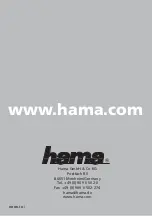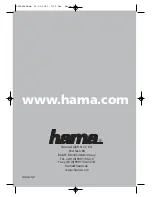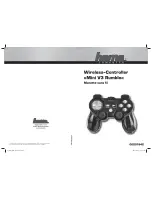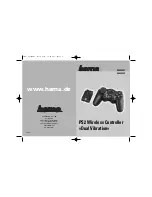
2/22/2018
XM540-W150
http://support.robotis.com/en/product/actuator/dynamixel_x/xm_series/xm540-w150.htm
11/17
Goal PWM (100)
In case of PWM Control Mode, both PID controller and Feedforward controller are deactivated while Goal PWM(100) value is directly controlling the motor through an Inverter. In other control modes, this
value is used to limit PWM value. This value cannot exceed PWM Limit(36). Please refer to the Gain section in order to see how Goal PWM(100) affects to different control modes.
Values
Description
Range
-PWM Limit(36) ~ PWM Limit(36)
Initial Value of PWM Limit(36) : ‘885’
Goal Current (102)
In case of Torque Control Mode, Goal Current(102) can be used to set a target current. This value sets a limit to current in Current-based Position Control mode. This value cannot exceed Current Limit(38).
Values
Description
Unit
about 2.69[mA]
All current related Data uses the same unit
Range
- Current Limit(38) ~ Current Limit(38)
-
Note : Applying high current to the motor for a long period of time could damage the motor.
Goal Velocity (104)
In case of Velocity Control Mode, Goal Velocity(104) can be used to set a target velocity. This value cannot exceed Velocity Limit(44). For now, Goal Velocity(104) is used for target velocity, but this value is
not used to limit the velocity.
Values
Description
Unit
0.229[RPM]
All velocity related Data uses the same unit
Range
-Velocity Limit(44) ~ Velocity Limit(44)
-
Note1) : The maximum velocity and maximum torque of Dynamixel is affected by supplying voltage. Therefore, if supplying voltage changes, so does the maximum velocity. This manual complies with
recommended supply voltage.
Note2) : If Profile Acceleration(108) and Goal Velocity(104) are modified simultaneously, modified Profile Acceleration(108) will be used to process Goal Velocity(104).
Profile Acceleration (108)
The acceleration of Profile can be set with this value. Profile Acceleration(108) can be used in all control modes except Torque Control Mode. Profile Acceleration(108) cannot exceed Acceleration Limit(40).
For more details, please refer to the Profile Velocity(112).
Values
Description
Unit
214.577[Rev/min2]
All acceleration related Data uses the same unit,
Range
0 ~ Acceleration Limit(40)
The value '0' on Profile Acceleration(108) means infinite acceleration.
Profile Velocity (112)
The Maximum velocity of Profile can be set with this value.
Profile Velocity(112) can be used in all control modes except Torque Control Mode and Velocity Control Mode.
Profile Velocity(112) cannot exceed Velocity Limit(44).
Velocity Control Mode only uses Profile Acceleration(108) instead of Profile Velocity(112).
Values
Description
Unit
0.229[RPM]
All velocity related Data uses the same unit
Range
0 ~ Velocity Limit(44)
If Profile Velocity(112) is set to ‘0’, it stands for infinite velocity.
The Profile is an acceleration/deceleration control method to reduce vibration, noise and load of the motor by controlling dramatically changing velocity and acceleration.
It is also called Velocity Profile as it controls acceleration and deceleration based on velocity.
Dynamixel provides 4 different types of Profile. The following explains 4 Profiles and how to select them.
Profiles are usually selected by a combination of Profile Velocity(112) and Profile Acceleration(108).
Triangular and Trapezoidal Profiles exceptionally consider total travel distance(ΔPos, the distance difference between target position and present position) as an additional factor.
For convenience, Profile Velocity(112) is abbreviated to VPRFL and Profile Acceleration(108) is abbreviated to VPRFL.
'X' stands for "Don't Care" case.
When given Goal Position(116), Dynamixel's profile creates target velocity trajectory based on present velocity(initial velocity of the Profile).
When Dynamixel receives updated target position from a new Goal Position(116) while it is moving toward the previous Goal Position(116), velocity smoothly varies for the new target velocity trajectory.
Maintaining velocity continuity while updating target velocity trajectory is called Velocity Override.
For a simple calculation, let's assume that the initial velocity of the Profile is '0'.
The following explains how Profile processes Goal Position(116) instruction in Position Control mode, Extended Position Control Mode, Current-based Position Control Mode.
①
An Instruction from the user is transmitted via Dynamixel bus, then registered to Goal Position(116).
②
Acceleration time(t1) is calculated from Profile Velocity(112) and Profile Acceleration(108).
③
Types of Profile is decided based on Profile Velocity(112), Profile Acceleration(108) and total travel distance(ΔPos, the distance difference between target position and present position)
Condition
Types of Profile



































